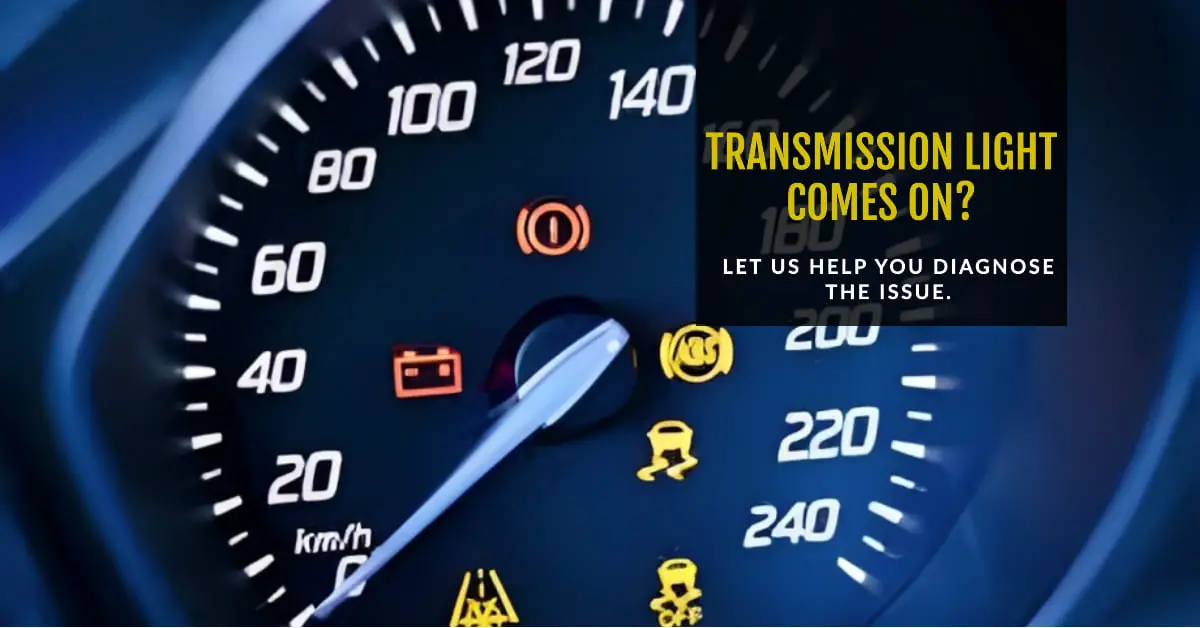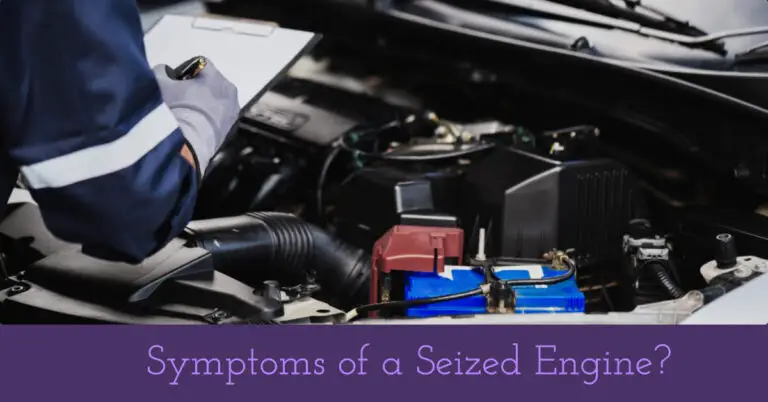Transmission Light Comes On? Diagnosing & Fixing Issues

Driving along without a care in the world when suddenly an ominous warning light illuminates on your dashboard. Uh oh, it’s the transmission light! This surprising glitch can make your stomach drop – but don’t panic just yet. While definitely cause for concern, in many cases that pesky transmission warning light can be resolved with simple DIY troubleshooting.
This comprehensive guide will explore all the common reasons the transmission light pops on, how to accurately diagnose the root of the problem yourself, and the steps needed to get your vehicle shifting smoothly again. Whether low fluid, faulty sensors, or more complex mechanical issues, we’ll cover everything you need to stop fretting and get your ride back up and running.
Table of Contents
First, What Does the Transmission Light Mean?
Before jumping into the typical triggers, let’s demystify what that transmission-shaped warning light on your dash signifies in the first place.
This amber, red, or yellow illuminated symbol is intended to alert drivers that the vehicle’s transmission or transaxle has encountered an issue. The light could indicate problems like low fluid, overheating, malfunctioning sensors or solenoids, electrical troubles, or mechanical wear and tear.
Think of it as your vehicle’s way of saying “Heads up – something is amiss with the complex mechanical communications system that allows your engine’s power to transfer to the wheels!”
In most cases, the transmission light’s goal is simply bringing a potential problem to your attention before serious damage occurs. But on rare occasions, it could mean pulling over ASAP to avoid transmission failure on the spot.
Either way, it’s an important early warning never to ignore. But the good news? There are a range of common and straightforward issues that cause the light to switch on unnecessarily. Identifying the exact culprit takes away the stress and puts you back in the driver’s seat.
Why Does My Transmission Warning Light Keep Coming On?
Now that we understand the role of that ominous glowing symbol, what are some of the typical issues that cause it to rear its ugly head? Here are the most common reasons your transmission light blinks, illuminates solid, or flickers:
Low Transmission Fluid Levels
The number one reason your transmission light pesters you? Low fluid levels. Automatic transmission fluid has many critical responsibilities including cooling, lubricating, and ensuring smooth gear shifts. When the fluid drops below optimal levels, your transmission suffers – and you suffer that anxiety-provoking warning light.
Causes for low transmission fluid range from leaks and burned fluid to neglecting scheduled fluid changes. Topping up the fluid and resolving any leaks can get things moving smoothly along again.
Problems with Solenoids and Sensors
Today’s transmissions rely on an array of sensors and solenoids – little electro-mechanical valves that control fluid flow for shifting – to operate optimally. If these components malfunction due to electrical issues, contamination, or wear and tear, your transmission light will switch on.
Faulty solenoids and sensors prevent proper monitoring of pressure, temperature, throttle position, gear engagements, and more. And your vehicle’s computer will activate the warning light due to the resulting errors.
Overheating Transmission
Excess heat is public enemy number one for transmissions. Towing heavy loads in high temperatures, low fluid levels, or obstructed coolant lines can all cause problematic overheating. The light blinks due to troubles from burned fluid, leaks, and warped seals or gaskets.
Internal Mechanical Problems
Issues like worn-out clutch plates, damaged gear synchronizers, and broken bands can lead to disruptions in shifting – think delays, slips, and hard shifts. Sensors detect these disturbances, and the computer reacts by switching on the transmission warning light.
Damaged or Loose Wiring Connections
It’s not just mechanical issues that can activate the transmission light – electrical problems can also be at play. Damaged wiring harnesses and connectors between your vehicle’s transmission and ECU can trigger the light, as can corrosion or loose plugs.
How to Diagnose Your Transmission Light Issue?
Alright, we’ve covered the usual suspects that trigger that terrifying transmission warning light. But how do you pinpoint the exact problem plaguing your vehicle? Here are some recommended tips for diagnosing what’s wrong before simply calling a mechanic.
Check Your Transmission Fluid Level
Given low fluid is the most common cause, checking the dipstick is step one. Locate the dipstick (usually red) near the engine block and wipe it clean. Then insert fully and pull back out to observe the color and level.
The ideal reading is within the hot zone on the dipstick. If low, infill slowly, recheck, and take a test drive. Topping it off may be the simple fix you need.
Is the Fluid Color Normal?
While you’re dipstick is out, also examine the color and smell of the transmission fluid itself. Healthy fluid should be translucent red and smell slightly burnt but not rancid.
Dark black fluid indicates overheating problems, while beige, milky, or creamy fluid points to poor lubrication due to internal wear and tear. Seek repairs if discoloration or odd scents arise.
Retrieve Any Trouble Codes
Use an OBD-II scanner tool to pull diagnostic trouble codes (DTCs) from your vehicle’s computer. Transmission codes start with P, B, or U, followed by four digits. These codes can offer vital clues like which solenoid or sensor may be malfunctioning.
Test Connections by Wiggling Wires
Damaged or loose connections between sensors and solenoids can be problematic. While running, gently wiggle wires and connectors to check for shorts setting off erroneous warning lights. Also ensure connections are corrosion-free.
Consider Flushing the Transmission
Over time, transmission fluid loses its effectiveness and should be replaced. Draining the old fluid and adding fresh, approved fluid can potentially solve issues and switch off warning lights.
Swap Damaged Solenoids or Sensors
If trouble codes point to a particular solenoid or sensor, replacing them can often remedy errant warning lights. Only install OEM or identical replacement parts to avoid new issues.
DIY Ways to Fix Your Transmission Light Problem
Armed with clues from your diagnostic process, there are several DIY methods you can attempt to address what’s ailing your transmission and get rid of that dreaded warning beacon.
METHOD X: Top Off Low Transmission Fluid
The easiest DIY step is adding more transmission fluid if your dipstick shows its low. Locate the transmission dipstick, typically colored red near the engine block. Pull it out and wipe clean with a rag. Reinsert fully then remove again to check the level.
Add just a little fluid at a time, rechecking the dipstick frequently. You don’t want to overfill. Pour slowly to avoid air bubbles. Idle the engine a few minutes after adding then recheck. Target being within the hot zone for optimal levels.
METHOD Y: Flush Old Transmission Fluid
Over time, transmission fluid breaks down and loses effectiveness. Draining the old fluid and replacing with fresh can potentially fix issues and turn off the warning light.
Drive briefly to warm up the transmission. Then locate the drain plug bolt on the transmission pan underneath your vehicle. Place a container underneath to catch old fluid. Loosen plug slowly and allow fluid to drain fully.
Reinstall drain plug snugly when finished and refill the transmission through the dipstick tube with the exact type and amount of fluid recommended per your owner’s manual. Drive briefly then recheck levels.
METHOD Z: Swap Faulty Sensors
If trouble codes indicate a specific sensor is malfunctioning, replacing it can remedy the problem. Locate the faulty sensor by following wiring harnesses from the transmission. Unplug the connector and detach the sensor from its mounting.
Install an identical OEM replacement sensor, reconnect the wiring harness, and clear any codes with an OBD scanner. Test drive to confirm the light stays off and shifts feel smooth.
When Should I Call a Transmission Shop?
While many transmission light issues can be corrected with simple fluid checks or fixes, others require specialized tools, skills, and parts best left to professionals. Seek expert help if:
- You lack the tools or know-how for proper diagnostics
- The warning light persists after your DIY efforts
- Leaks, slips, or odd shifts continue plaguing your vehicle
- Major repairs like replacing bands, gears, or clutches are recommended
Reputable transmission shops have the expertise to correctly identify issues and offer reliable solutions. Always seek multiple estimates and recommendations if costs seem questionable.
Maintaining Your Transmission is Key
The best defense against a bothersome warning light? Proper preventative maintenance. Here are some tips to keep your transmission in top shape:
- Check fluid monthly and top off if needed
- Have fluid flushed per manufacturer recommendations
- Keep an eye out for any leaks developing
- Drive conservatively, especially when towing or hauling
- Regularly inspect connections for damage or grime
- Don’t neglect scheduled maintenance checks
A well-maintained transmission is far less likely to suffer problems leading to panic-inducing dash lights. But on the chance your warning beacon does click on, use the guidance in this article to diagnose and remedy the issue – and save your sanity plus hard-earned cash.
In summary, while seeing your transmission warning light illuminate is disconcerting, in many cases, a bit of DIY troubleshooting can identify and resolve the culprit. Learn to decode what your vehicle is trying to tell you, follow diagnostic steps, and take appropriate measures. Understanding what sets off the light along with how to properly react will help you keep your ride shifting smoothly for the long haul.







